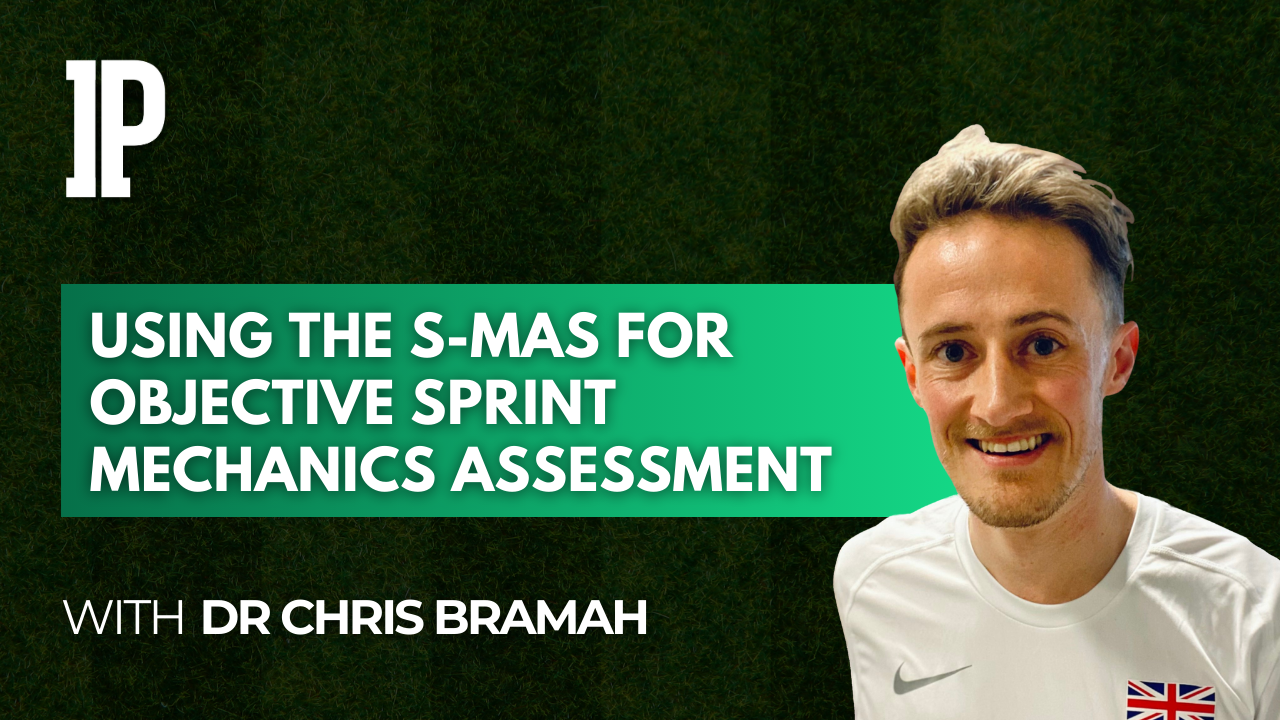Dr Chris Bramah - Using the S-MAS for Objective Sprint Mechanics Assessment
Apr 02, 2025
Episode 181: In this episode of the Inform Performance podcast host Andy McDonald speaks to Dr. Chris Bramah, a leading physiotherapist specializing in running injuries and biomechanics. With vast experience in elite-level sport, Chris has worked with British Athletics and Team GB, supporting endurance athletes at the Tokyo 2020 & Rio 2016 Olympics, the 2017 London World Championships, IAAF Diamond League events, and global altitude training camps.
Topics Discussed:
-
The importance of movement quality assessment in injury prevention
-
Sprint technique: Balancing risk vs. reward for performance and injury reduction
-
Understanding the S-MAS (Sprint Mechanics Assessment Score) and its key parameters
-
The workflow of an S-MAS assessment – How it’s used in practice
-
Case studies demonstrating real-world applications of S-MAS
-
Limitations and future directions of sprint mechanics assessment
-
The role of AI in revolutionizing movement analysis
Key Points
-
Sprint biomechanics play a crucial role in both injury prevention and performance enhancement. While some practitioners debate the influence of mechanics on injury risk, evidence suggests that poor movement quality can contribute to recurring injuries, especially in high-speed running activities. Tools like the Sprint Mechanics Assessment Score (S-MAS) aim to bridge the gap between subjective coaching observations and objective biomechanical evaluations, providing a structured approach to assess and improve sprint mechanics.
-
The Sprint Mechanics Assessment Score (S-MAS) is a qualitative tool designed for quick field-based assessment of sprint mechanics. It evaluates movement quality across three domains: lumbar pelvic control, backside mechanics, and overstride patterns. By scoring specific criteria such as trunk rotation, anterior pelvic tilt, excessive back-kicking, and foot placement relative to the center of mass, the S-MAS helps identify areas for targeted intervention while minimizing reliance on expensive or inaccessible technology.
-
Poor sprint mechanics can manifest in various ways, such as excessive trunk rotation or anterior pelvic tilt during swing phases, overstriding with the foot landing far ahead of the center of mass, or inefficient backside mechanics like excessive extension at toe-off. These patterns can increase injury risk by altering load distribution across muscles and tendons. Addressing these deficits through targeted interventions may reduce injury recurrence and improve performance outcomes.
-
The S-MAS was developed to address practical challenges in assessing sprint mechanics in applied settings. Traditional tools like 3D motion capture are often cost-prohibitive and logistically challenging for many teams. The S-MAS provides an accessible alternative, enabling practitioners to assess movement quality without relying solely on subjective visual analysis or expensive equipment.
-
A key strength of the S-MAS is its cumulative scoring system, which quantifies the severity of mechanical deficits. This structured approach allows practitioners to prioritize interventions based on the most critical issues affecting an athlete’s movement quality. For example, higher scores in specific domains like overstride patterns might indicate a need for focused retraining in foot placement or stiffness control.
-
While modifying sprint mechanics can be beneficial for reducing injury risk, it is not without challenges. Changes must be approached cautiously, particularly when addressing athletes with established movement patterns. Sudden alterations without adequate preparation can lead to new injuries by overloading previously underutilized structures. Gradual progression and ensuring physical readiness are essential components of any mechanical intervention.
-
Certain biomechanical parameters were deliberately excluded from the S-MAS due to insufficient scientific evidence or low reliability in field assessments. For instance, factors like lower limb rotation during swing phase or plantar flexion angles were omitted despite theoretical links to injury risk. This ensures that the tool remains both practical and evidence-based.
-
The decision to intervene in an athlete’s sprint mechanics should be context-dependent. Factors such as an athlete's history of recurrent injuries versus their performance success with existing mechanics must be weighed carefully. For athletes with chronic soft-tissue injuries linked to poor mechanics, intervention may be warranted. However, for those performing well without injury history, changes might not be justified.
-
Effective mechanical interventions require a foundation of physical preparedness. For example, encouraging higher hip flexion during late swing phase can enhance angular velocity but may increase hamstring strain if tendon structures are not robust enough to handle the added load. Ensuring athletes possess adequate strength and stiffness qualities is critical before implementing such changes.
-
The S-MAS emphasizes observable and reliable parameters that are directly linked to injury risk or performance outcomes. These include trunk stability, foot placement relative to the center of mass, and vertical stiffness during ground contact. By focusing on these "big rocks," practitioners can make meaningful improvements while avoiding speculative or less reliable metrics that lack strong scientific backing.




